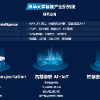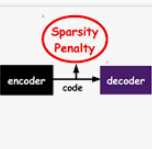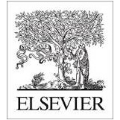Massive MIMO and non-orthogonal multiple access (NOMA) are crucial methods for future wireless systems as they provide many advantages over conventional systems. Power-domain NOMA methods are investigated in massive MIMO systems, whereas there is little work on integration of code-domain NOMA and massive MIMO which is the subject of this study. We propose a general framework employing user-grouping based hybrid beamforming architecture for mm-wave massive MIMO systems where NOMA is considered as an intra-group process. It is shown that classical receivers of sparse code multiple access (SCMA) and multi-user shared access (MUSA) can be directly adapted. Additionally, a novel receiver architecture which is an improvement over classical one is proposed for uplink MUSA. This receiver makes MUSA preferable over SCMA for uplink transmission with lower complexity. We provide a lower bound on achievable information rate (AIR) as a performance measure. We show that code-domain NOMA schemes outperform conventional methods with very limited number of radio frequency (RF) chains where users are spatially close to each other. Furthermore, we provide an analysis in terms of bit-error rate and AIR under different code length and overloading scenarios for uplink transmission where flexible structure of MUSA is exploited.
翻译:对于未来无线系统来说,大规模和大规模微型和不横向多重接入(NOMA)是未来无线系统的关键方法,因为它们为常规系统提供了许多优势。在大型的MIMO系统中,对电源领域NOMA方法进行了调查,而关于将代码领域NOMA和大型MIMO集成的工作却很少,这是本研究的主题。我们提议了一个总框架,为MIMO大规模大型MIMO系统使用基于用户组合的混合波束结构,因为将NOMA视为一个集团内部过程。我们表明,可以直接调整稀有代码多存取和多用户共享接入的经典接收器(MSA)的典型接收器。此外,为MUSA的上链接提议了一个比经典的改进的新型接收器结构。这个接收器使得MUSA比SCMA更适合以更复杂的方式进行上连接传输。我们提供了一个较低的关于可实现的信息率(AIR)的组合组合框架,作为绩效衡量尺度。我们表明,代码领域NOMA方案超越了常规方法的常规方法,而无线电频率非常有限,用户在空间上接近对方。此外,我们提供了对BI-Rlink MIL 和MER 的变式结构的分析。




